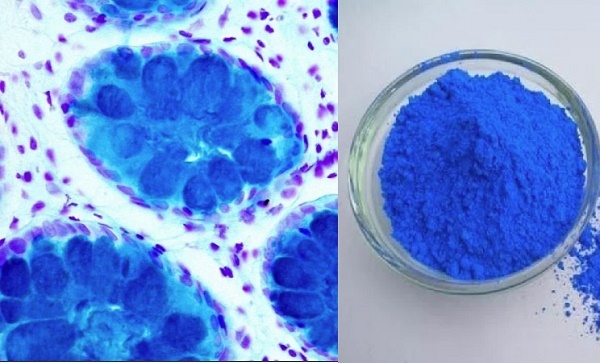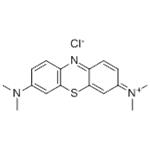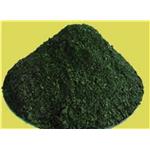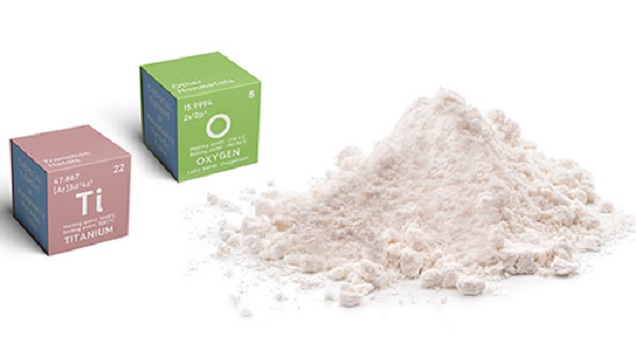Related Information about Methylene Blue
Nov 29,2023
Methylene blue (MB), or methylthioninium chloride, is the primary compound of eosin methylene blue (EMB) agar, a medication and microbiological dye. It is used as an antidote to drug-induced methemoglobinemia and in surgical sciences for staining the surgical field. It was reported to show activity against Plasmodium falciparum strains and to have the potential to be used as an antimalarial agent in combination with other drugs[1].

History
Working in Germany, Heinrich Caro synthesized Methylene blue as a dye in 1876. Soon after, it was studied by Paul Ehrlich, who used it to stain Mycobacterium tuberculosis. Methylene blue also stains Plasmodium malariae and has been tried as an antimalarial agent with an adequate clinical effect. In the late nineteenth century, it was used in cases of psychotic agitation but was later replaced by newly discovered barbiturates[2].
Use
Methylene blue is a tricyclic phenothiazine approved by the FDA and EMA for treating methemoglobinaemia and malaria. It is also used to inactivate viruses in blood products for transfusion in the presence of UV light. It has been used with promising results in the treatment of mood disorders. Outside of neuropsychiatry, methylene blue is used for acute treatment of carbon monoxide or cyanide poisoning, methemoglobinemia, as a urinary antiseptic, in septic shock, for the treatment of malaria, and as an in vivo dye during surgical procedures[3].
Pharmacokinetics
The bioavailability of methylene blue is significantly higher following intravenous administration. Thus, the US Food and Drug Administration warned about the concurrent use of serotonin reuptake inhibitors and intravenous use of methylene blue. Methylene blue is eliminated via the kidneys, with about three quarters in the form of its reduced form, leukomethylene blue, as well as demethylated metabolites, azure A and azure B. Azure B, in particular, has been reported to have antidepressant-like properties in animal models. The terminal half-life of elimination has been estimated at 5–6.5 h.
Side effects
In humans, methylene blue is usually well tolerated. Its main side effects are gastrointestinal tract irritation and urinary tract burning; some patients find urine discoloration troublesome.
References
[1] Deniz Gazel, Alper Akçalı, Müşerref Tatman Otkun. “In vitro activity of methylene blue and eosin methylene blue agar on colistin-resistant A. baumannii: an experimental study.” Journal of medical microbiology (2019).
[2] Alda, Martin. “Methylene Blue in the Treatment of Neuropsychiatric Disorders.” CNS drugs 33 8 (2019): 719–725.
[3] Giulio Scigliano , Giuseppe Augusto Scigliano. “Methylene blue in covid-19.” Medical hypotheses 146 (2021): Article 110455.
- Related articles
- Related Qustion
- Uses and Side effects of Methylene blue Jul 13, 2022
Methylene blue is commonly used in diagnostic procedures and is also used to treat a number of medical conditions (see Facts about methylene blue box).
Methylcyclopentadienyl Manganese Tricarbonyl is a fuel additive enhancing combustion efficiency and reducing emissions, yet concerns exist about its potential health and environmental impacts.....
Nov 29,2023APITitanium dioxide is one of the most widely used metal dioxides for applications such as semiconductors, photocatalysts, pigments, pharmaceutical excipients, and antimicrobials.....
Nov 29,2023Inorganic chemistryMethylene Blue
61-73-4You may like
- What is Dicyclohexylamine?
Oct 25, 2023
- What is p-anisidine?
Oct 20, 2023
- Rhodamine B: Applications, toxicity and metabolism
Jun 6, 2023
- Methylene Blue
-

- $8.00 / 1KG
- 2024-03-29
- CAS:61-73-4
- Min. Order: 1KG
- Purity: 99%
- Supply Ability: g-kg-tons, free sample is available
- methylene blue
-

- $56.00 / 1kg
- 2023-12-21
- CAS:61-73-4
- Min. Order: 1kg
- Purity: 99%
- Supply Ability: 10000ton
- methylene blue
-

- $56.00 / 1kg
- 2023-12-21
- CAS:61-73-4
- Min. Order: 1kg
- Purity: 99%
- Supply Ability: 10000ton





